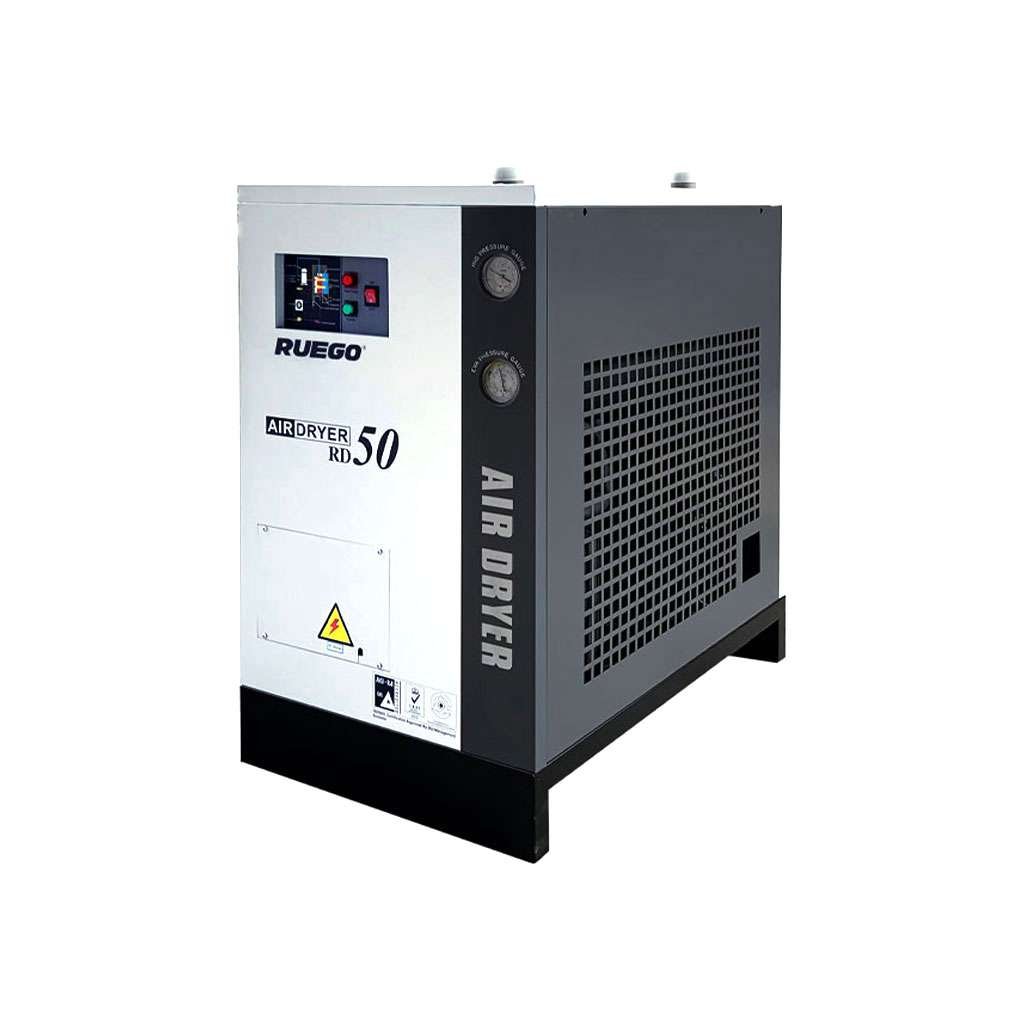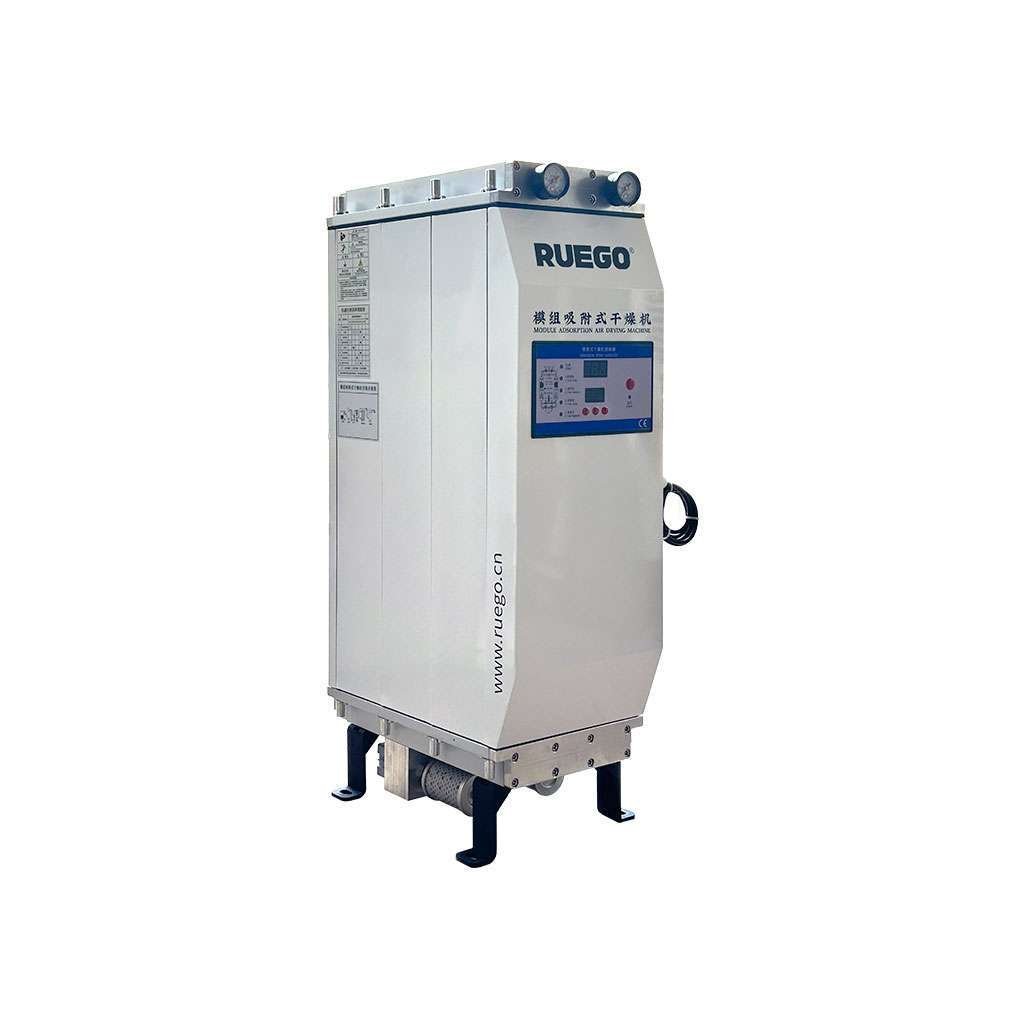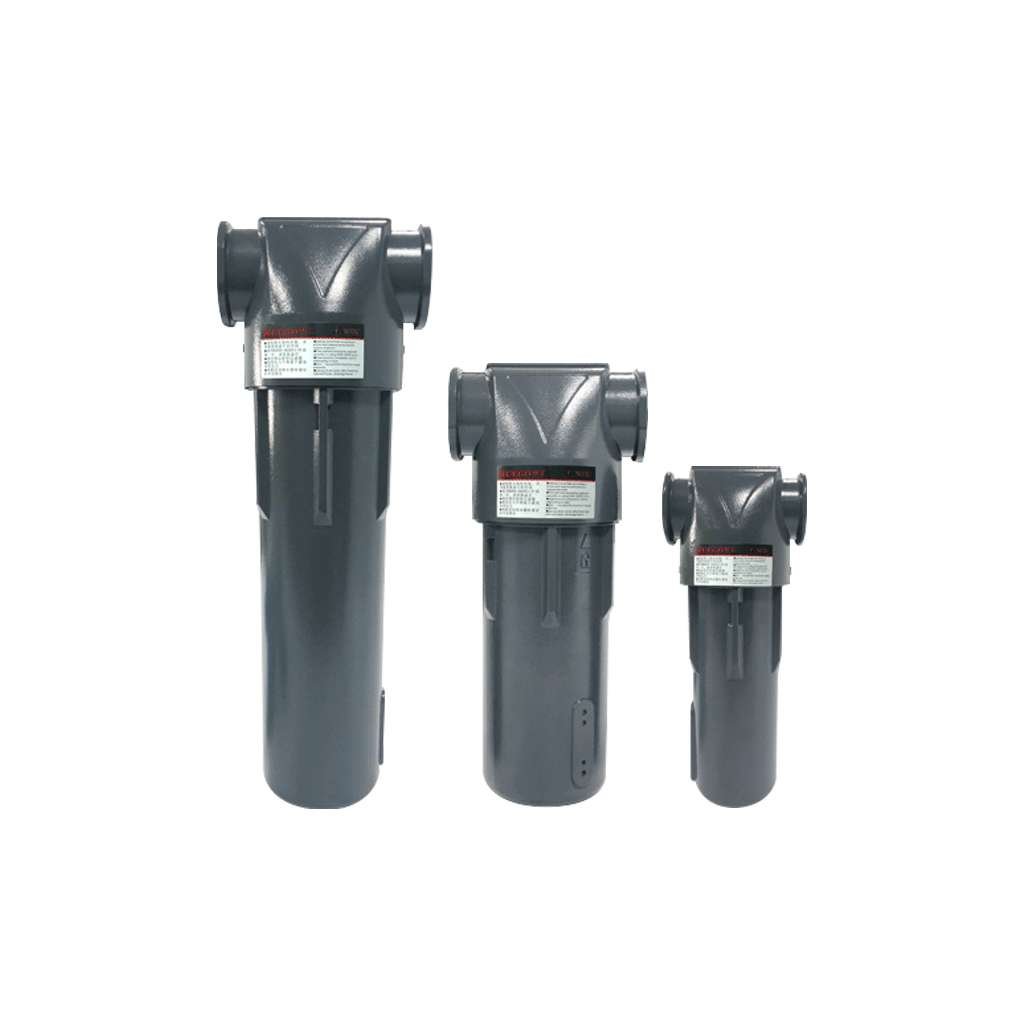High-Performance Air Dryers for Your Compressed Air System
Why Choose the Right Air Dryer?
Choosing the right air dryer is essential for maintaining the efficiency and longevity of your compressed air system. Protect your equipment, reduce downtime, and ensure high-quality air for your operations.
Prevent Damage
Eliminate moisture to avoid corrosion and equipment failure.
Boost Efficiency
Improve system performance and reduce energy waste.
Enhance Product Quality
Achieve clean, dry air for sensitive applications.
Lower Maintenance Costs
Reduce wear and tear, extending equipment lifespan.
Types of Air Dryers for Compressors
When selecting an air dryer for a compressor, it’s essential to understand the different types available and their unique advantages. Below are the main types of air dryers:
Refrigerated Air Dryers
- Working Principle: Cools compressed air to condense moisture, which is then drained.
- Key Advantages:
- Cost-effective and easy to maintain.
- Suitable for general industrial applications.
- Best Suited For: Industries with moderate dew point requirements (2-10°C).
Desiccant Air Dryers
- Working Principle: Uses desiccant materials (e.g., silica gel) to adsorb moisture, ensuring ultra-dry air.
- Key Advantages:
- Achieves extremely low dew points (as low as -40°C or lower).
- Modular and space-saving designs for flexibility.
- Best Suited For: High-precision industries such as pharmaceuticals, electronics, and food production.
Membrane Air Dryers
- Working Principle: Uses specialized membrane filters to remove water vapor from compressed air.
- Key Advantages:
- Energy-efficient and compact.
- Ideal for low-flow applications.
- Best Suited For: Portable or small-scale operations with limited energy resources.
Product Categories

Refrigerated Air Dryers
Refrigerated air dryers are a cost-effective solution for removing moisture from compressed air. Ideal for general industrial applications, these dryers are energy-efficient and reliable.

Desiccant Air Dryers(Adsorption)
Desiccant air dryers deliver ultra-low dew points, making them perfect for industries requiring precision-grade air, such as pharmaceuticals and electronics.

Air Compressor Filters
Compressed air filters remove particles, oil, and contaminants, ensuring clean air for critical applications like food and beverage production.
Comparison Table
| Product Type | Flow Range (CFM / m³/min) | Pressure Range (PSI / Bar) | Key Features | Applications |
|---|---|---|---|---|
| Refrigerated Air Dryer | 35.3 - 2295.5 CFM / 1 - 65 m³/min | 87 - 145 PSI / 6 - 10 Bar | Cost-effective, reliable, compact design | General industrial use |
| Desiccant Air Dryer | 28.3 - 2860.5 CFM / 0.8 - 81 m³/min | 58 - 232 PSI / 4 - 16 Bar | Modular, space-saving design, ultra-low dew points | Pharmaceuticals, Electronics |
How to Choose the Right Air Dryer for Your Compressor?
Choosing the right air dryer depends on your specific needs and application requirements. Here are the key factors to consider:
Air Quality Requirements
- Determine the ISO air quality class needed for your application. For example:
- General manufacturing: ISO Class 4 or 5.
- Sensitive applications (e.g., electronics): ISO Class 1 or 2.
- Determine the ISO air quality class needed for your application. For example:
Flow Rate (CFM)
- Select a dryer that can handle your compressor’s maximum flow rate. For instance:
- Refrigerated dryers: Up to 2295.5 CFM.
- Desiccant dryers: 28.3 to 2860.5 CFM.
- Select a dryer that can handle your compressor’s maximum flow rate. For instance:
Operating Pressure (Bar)
- Ensure the dryer’s pressure range matches your system:
- Refrigerated dryers: 87 – 145 PSI / 6 – 10 Bar.
- Desiccant dryers: 58 – 232 PSI / 4 – 16 Bar.
- Ensure the dryer’s pressure range matches your system:
Application Needs
- Consider your industry’s specific requirements:
- Food and beverage: Focus on contamination-free air.
- Electronics: Require ultra-dry air with low dew points.
- Consider your industry’s specific requirements:
Space and Energy Efficiency
- Choose modular designs if space is limited.
- Evaluate energy-efficient options to reduce operational costs.
RUEGO – your premier expert in air compressor manufacturing.
Experience the reliable support and exceptional value we deliver to drive productivity and success.
FAQ
Yes, air dryers are essential for removing moisture from compressed air, preventing corrosion, reducing equipment damage, and maintaining overall system efficiency. Without a dryer, moisture can lead to rust, blockages, and reduced air quality.
Refrigerated Dryer: Cools air to condense and remove moisture. Ideal for general industrial applications with moderate dew point requirements (approximately 2-10°C).
Desiccant Dryer: Uses adsorption to remove moisture, achieving ultra-dry air with dew points as low as -40°C or lower. Better suited for sensitive applications such as pharmaceuticals or electronics.
Consider the following factors:
- Air Quality Requirements: The required dew point and ISO air quality class for your application.
- Flow Rate (CFM): Ensure the dryer can handle the air volume of your compressor.
- Operating Pressure: Match the dryer to your system's pressure range.
- Application Needs: Choose a refrigerated dryer for general use or a desiccant dryer for precision drying.
A modular desiccant dryer features a compact, space-saving design that is easy to install and maintain. Its modular nature allows for flexibility in system upgrades and reduces downtime during maintenance. Ideal for facilities with limited space or frequent layout changes.
By removing moisture, oil, and contaminants from compressed air, an air dryer ensures clean, dry air is delivered to equipment or production processes. This is critical for industries like food and beverage, pharmaceuticals, and electronics, where air purity directly affects product integrity.
Using an inappropriate air dryer can result in:
- Insufficient moisture removal, leading to equipment corrosion.
- Higher energy consumption and operational costs.
- Inability to meet specific air quality requirements, potentially impacting production quality.
Yes, combining both dryers is common in systems that require ultra-dry air. The refrigerated dryer handles most of the moisture, reducing the load on the desiccant dryer, which then ensures precision drying.
Maintenance schedules depend on the type of dryer:
- Refrigerated Dryers: Inspect and clean condensers and replace filters every 6-12 months.
- Desiccant Dryers: Replace desiccant material based on usage (typically every 12-24 months) and inspect valves regularly. Always follow the manufacturer's recommendations.
The lifespan varies by type and usage:
- Refrigerated Dryers: Typically 8-10 years with proper maintenance.
- Desiccant Dryers: 10+ years, provided desiccant material is replaced periodically, and the system is well-maintained.
Yes, an air filter is essential to remove solid particles and oil mist before air enters the dryer. This protects the dryer from contamination and ensures optimal performance.
Join Our Newsletter
Join our mailing list to receive expert tips, industry news, and updates on our innovative air compressor solutions. Be the first to know!